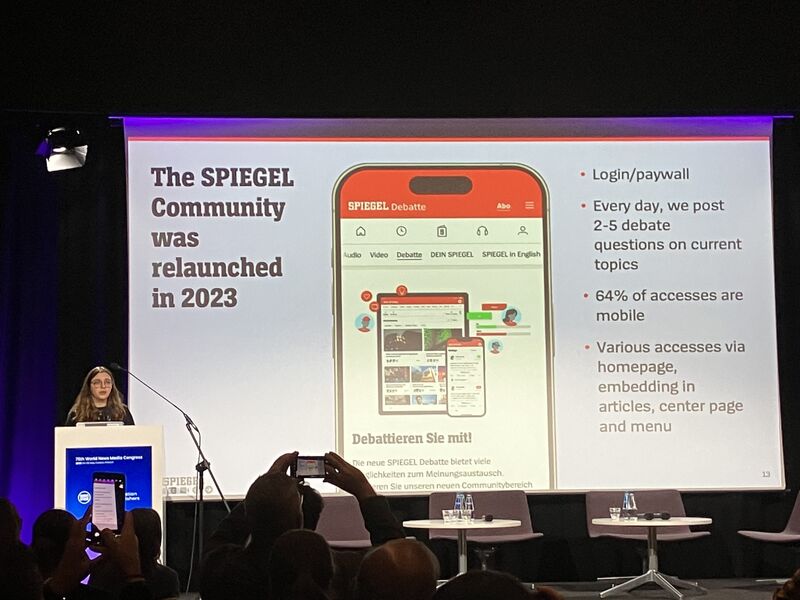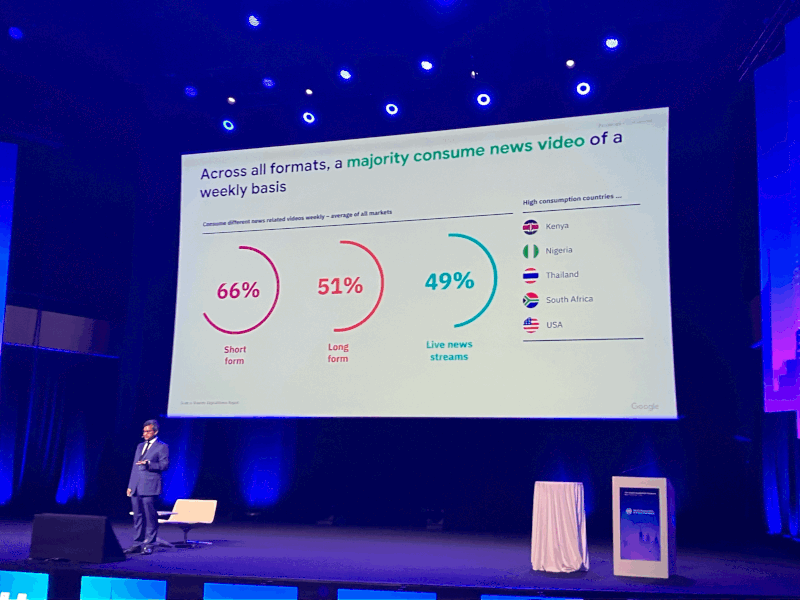Last week, I attended WAN-IFRA’s World News Media Congress in Kraków. With streams for media leaders, editors, digital media, and topical deep dives on specific issues often running concurrently, it’s impossible to take it all in, especially when there are so many interesting side conversations to be had. I focused on the digital media track, and it covered many of the current major digital themes in journalism: community (including young audience engagement), reader revenue, and AI. This week and next week, I’ll be highlighting some of the sessions from the Congress that resonated with me.
Community and sparking more participation at the FT
the rising importance of reader revenue and the decline in referrals from social and search have led publishers to deepen their relationships with their audiences. Hannah Sarney, editorial product director and executive editor at the Financial Times, talked of how they were updating their commenting community. Owned spaces result in deeper trust, she said.
While most publishers shut down their comment sections as audiences shifted to social platforms a decade ago, the FT kept theirs. Comment readers are 11x more engaged than active users who don’t read comments, and comment writers are 48x more engaged. “Community isn’t a bolt-on,” she said. The challenge is to get more readers engaged in the community. Only about half of the audience read the comments, and only 4% wrote comments.
“That leaves quite a bit of a gap,” she admitted, but she argues that this isn’t down to apathy or because the audience doesn’t care. “They don’t feel that the door is open or that the door even exists.”
Hannah and I had some great conversations about product management in Perugia and Kraków, and I appreciate two things about her approach. When I was doing my master’s research, I found that successful product management was built on strong cross-functional relationships, and this is Hannah’s superpower, her ability to foster relationships across the business. The other reason why she is such a good product leader is that she is able to translate values and goals into a product. For their community, the FT wanted to:
spark participation
protect civility
foster togetherness.
Based on these goals, they are now testing a few approaches.
To support their moderation team, they have brought in an AI moderation tool from Utopia. “ It really has the human in the loop. It retrains off of the choices moderators make,” she said.
Their user research has shown that a sizeable chunk of their audience isn’t even aware the comments exist on the site. To overcome this, they have a new AI-powered tool that generates questions from articles to prompt engagement in the comments. Editors are given choices for the question, and they can choose the one that is the most appropriate for the story.
They launched a redesigned live Q&A feature to drive broader participation and deliver a mobile-first user experience, clearly defined roles and the ability to easily catch up after the event is over.
How The City Connects with New York City Communities
Publishers have been struggling to reach new audiences with the decline in referrals from search and social media, but these platforms also don’t reach everyone. As I’ve written before, the Platform Era was an aberration, providing free marketing and audience growth. However, the cost was high. The platforms owned the audiences, and publishers only rented them.
I remember when I first came across the story of how The City creatively did audience development by using postal targeting available in the US in a Nieman Lab article. Nic Dawes, the executive director of The City, told the Congress how they used this technique to reach new audiences, especially those most affected by the stories they were covering. For instance, they did a story about landlords who didn’t heat their apartments, literally leaving their tenants in the cold. They used call data to find zip (postal) codes that had the highest density of heating complaints, and then they used the US Postal Service marketing programme to send postcards to people in areas most affected. Brilliant.
When they first started doing this, they tested the postal outreach against Facebook ads. Readers who received the postcards were not only more likely to read the stories, but they also spent more time with the stories. They have used this technique to target audiences near Superfund sites, highly toxic sites that are being cleaned up.
The other thing I love about their approach is that when they survey audiences, they don’t ask readers whether they liked the piece but “what the journalism helped them do”. Steal this idea.
And this was just one of the sessions. Here are a couple of the LinkedIn posts I wrote about others.

